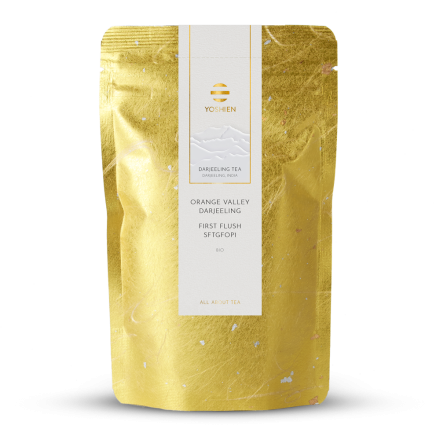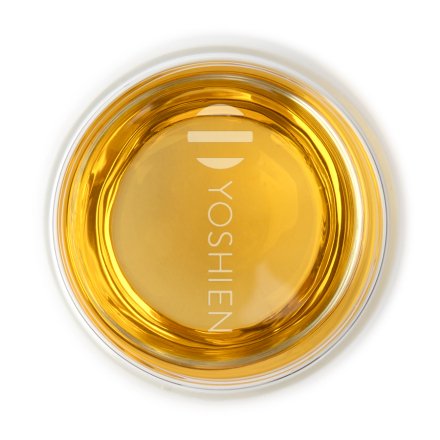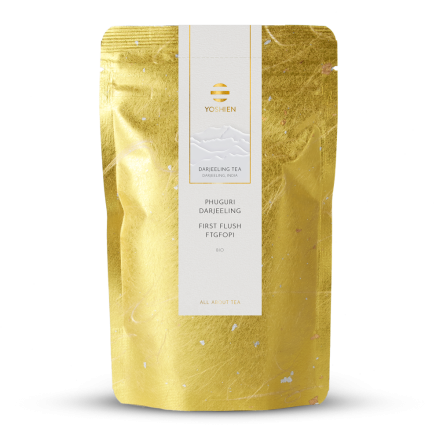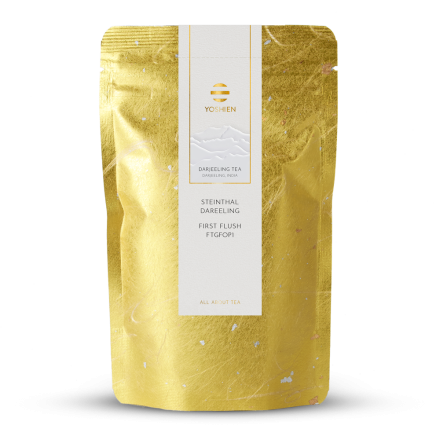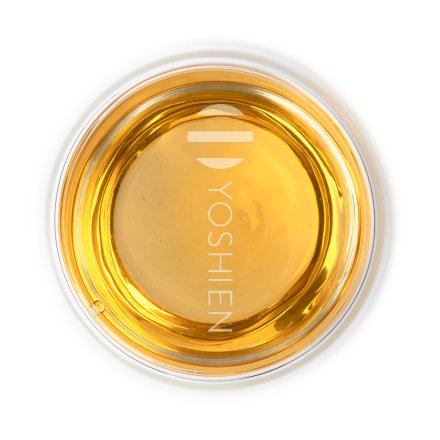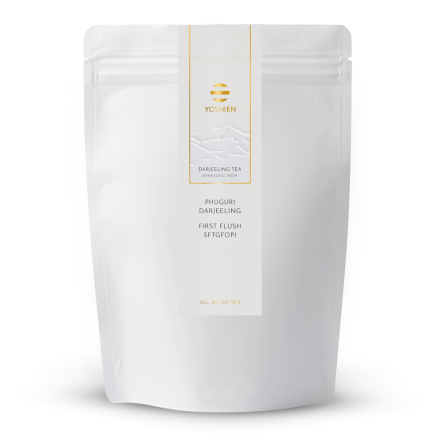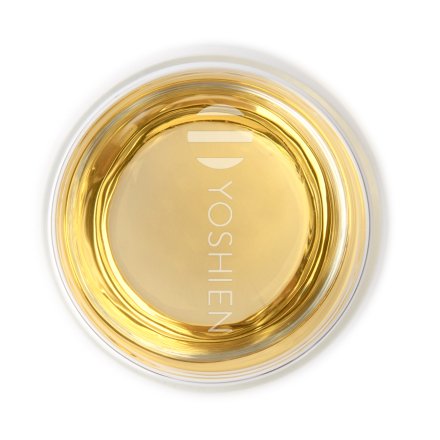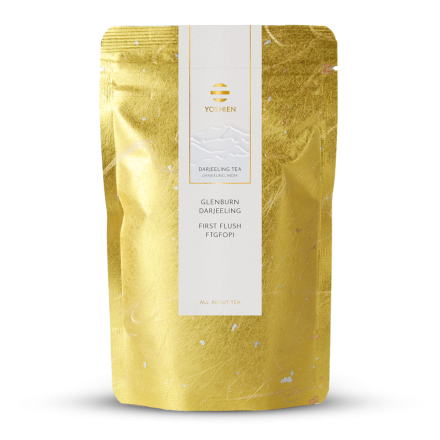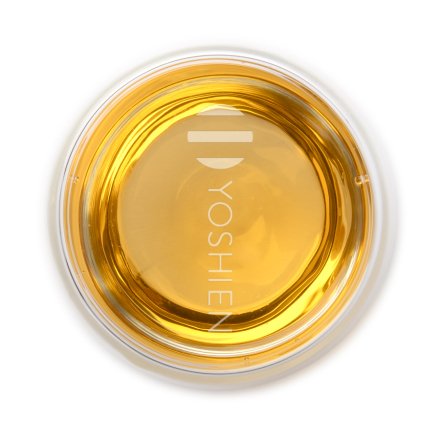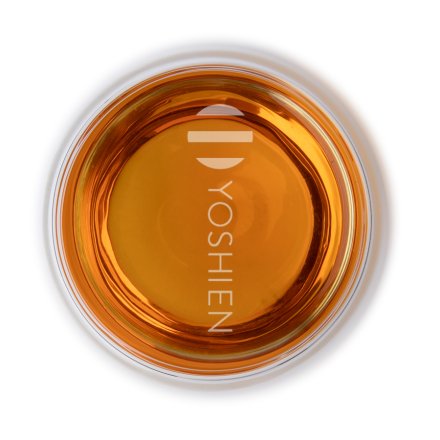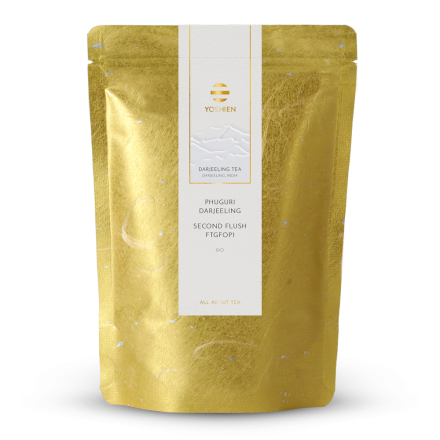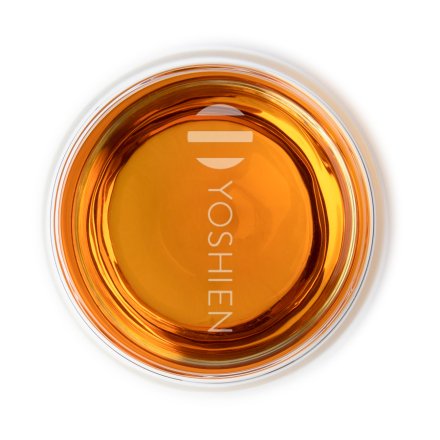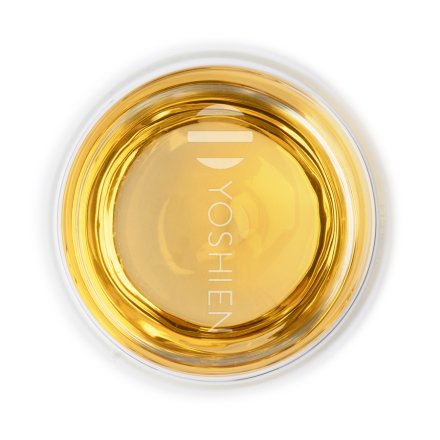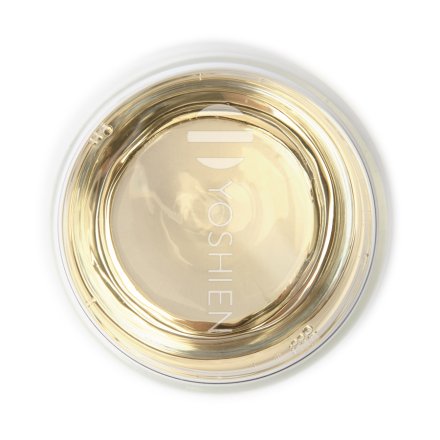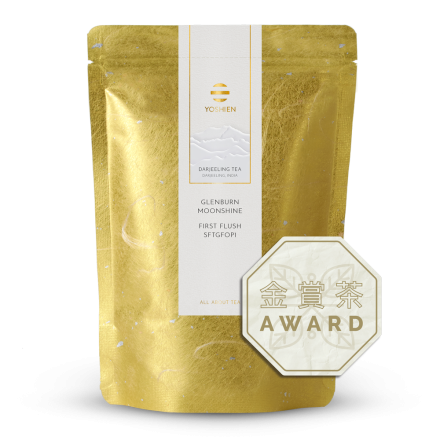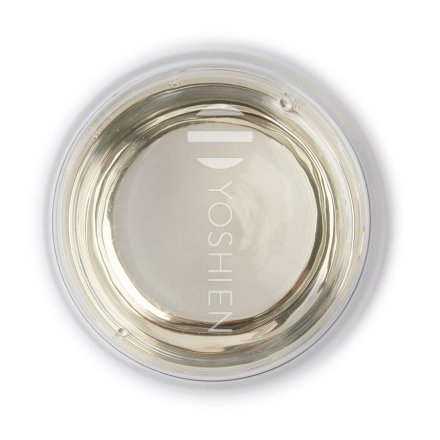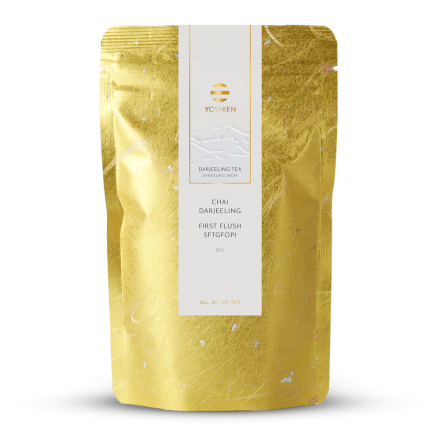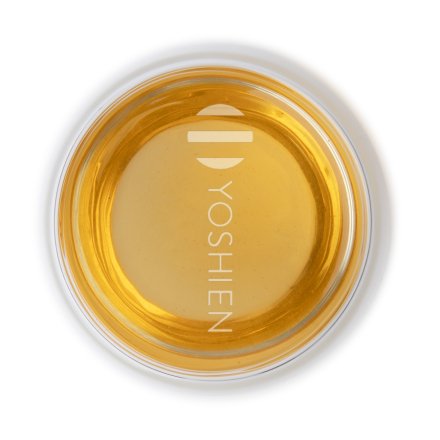Darjeeling
Top cultivars and harvests flown in fresh from the most exclusive estates in Darjeeling, all either grown without plant protection products or certified organic: the floral and sweet first flush, the malty and fruity second flush and the finest white darjeeling.
First Flush
Our first flush darjeeling is a blend of the tender leaves and white buds from the very first harvest of the year. A lightly oxidised tea, it possesses an incomparable freshness as well as a full-bodied hazelnut aroma and elegant floral notes.
-
-
-
-
-
Super Premium 96 P.
Darjeeling, India
€15.9080g
€198.75 / 1kg
Second Flush
Our second flush is made from a careful selection of the finest leaves from the second harvest, which occurs from April to June. The result is a darjeeling with a full-bodied muscatel flavour and strong walnut notes with a sweetness reminiscent of dried fruits.
-
Premium Grade 90 P.
Darjeeling, India
€9.90100g
€99.00 / 1kg
-
-
Royal Grade 98 P.
Darjeeling, India
€14.9050g
€298.00 / 1kg
White Darjeeling
The crème de la crème of 1st flush darjeelings, with crystal clear aromas of fruity peach and apricot. The absolute pride of every tea estate in the region, this tea is made from the most delicate buds and leaves from the earliest harvests of the year, in mid-March. Sourced from some of the most renowned tea estates in all of Darjeeling.
-
Royal Grade 98 P.
Darjeeling, India
€14.9050g
€298.00 / 1kg
-
Royal Grade 98 P.
Darjeeling, India
€14.9050g
€298.00 / 1kg
-
Royal Grade 99 P.
Darjeeling, India
€26.9050g
€538.00 / 1kg
Ayurvedic Darjeeling
Organic first and second flush Darjeeling teas from renowned estates, blended with organic turmeric and organic tulsi. Also available in the form of a classic chai, blended with traditional Indian spices.



